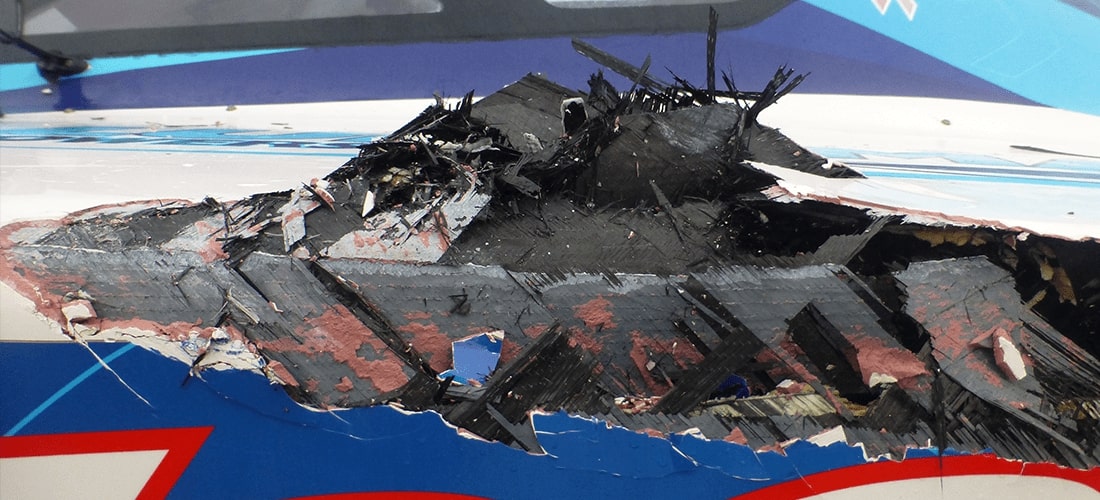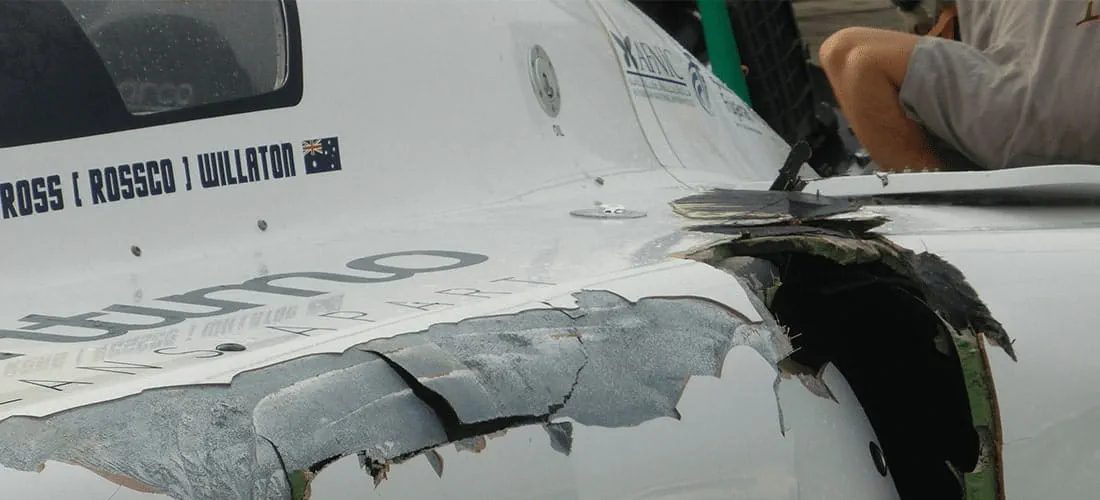Seafarers are known to be notorious traditionalists and especially powerboat racing has been lacking behind in terms of innovation. The field of - both outboard and inboard - marine engines has been developing very fast while boat construction technologies remained quite the same. Besides speed, this also resulted in an increase of risks.
Traditionally, the construction materials of choice for racing boats has been wood. But at some point composite materials made their appearance in the marine industry scene. Boats and hulls are since then made by the use of FRP or CRP, laminated through moulding and thus allowing the mass production of boats. However, lighter and stronger structures did not improve safety, particularly for racing boats.
Safety back then versus safety now
"Safety" meant the reinforced use of life jackets in order to prevent one from being thrown out of the cockpit. But speed had grown considerably and consequently, pressure on both the hull and the driver was increased by the square of speed.
Over the years (and many tragic accidents) that followed, a reinforced ergonomic protection seat and safety belts were introduced and the characteristics of the cockpit panels were standardized.
The standard value stands for the load that a 100 mm wide panel must endure simply supported on rolls placed at 500 mm distance, without exceeding 25 mm deflection before failing. In offshore racing, we have witnessed a transition from driving while standing to sitting fastened and protected by - in first instance a semi hood or full hood, and later - a side by side solution. Both the driver and the trottleman would be sitting side by side under only one protective structure. However, this solution has proved dangerous as well due to the large openings of the safety cell. The change of materials in offshore racers, from aluminum light alloys to composite sandwich structures (where the buoyancy is based on the structure core), meant that the boats did not sink any more, even when they were highly damaged.
The ideal sandwich structure
Over of the years and with the increase in speed, the nature of incidents changed. For instance, capsizing at turning points became more frequent. When this happens, the component most prone to dangerous failure is the hatch, the access door to the canopy. It is a sensitive portion of the protective capsule, mainly because consisting of a large sized panel which is simply laid; hinged at the bow and bound by one or two locking systems. For the purpose of being able to easily extract the crew in the event of an accident, the minimum requirement is an opening of 550x825 mm. The hatch, in most cases, is a sandwich structure. In an "excellent" sandwich structure, the core performs based on the shear strength. The shear strength of the core is directly proportional to the density of the foam (usually PVC foamed cross linked). A good sandwich structure must be balanced and symmetrical as much as possible, ideally it has:
- an E-glass layer (possibly a twill) as an outer layer (which protects the underlying multiaxial carbon fibre);
- a core with a density of 130 kg/mc (which is a good compromise between thickness and density);
- an inner skin based on multiaxial carbon HR and
- a finishing aramid layer (Kevlar or Twaron)
This latter aramid layer doesn’t play a structural role but works as a protection in case of breakage. Often, the drivers and especially the operators of the rescue team are injured by carbon chips during crew rescue operations.
How composite materials save lives
Last April 13th in Fujairah (U.E.), at the first race of the X-Cat U.I.M’S (Union Internationale Motonautique) World Championship, the concept of safety first (achieved by proper design and materials) was once again demonstrated. What happened: two Australian boats crashed; Boat 12 crashed into boat 8 sending her into a spin. Boat 12 capsized and took most damage. Trottleman Tom Barry Cotton came out of the escape hatch at the bottom of the tunnel. The driver, Ross Willaton, removed the steering wheel, but got stuck upside down below water. He was saved by the prompt intervention of the Bergamo Scuba Angel (the rescue team that also operated in America’s Cup) and by the safety cell, more specifically in this case the possibility to remove the main hatch by extracting the pins (aeronautic type with piston). The rescue was carried out from below the capsized boat. Both drivers were fine! Pål Virik Nilsen and Jan Braaten of Team Australia, pilots of boat 8 were both fine too. The boat only took minor damage to the hull.
Sergio Abrami & C. Technical & Safety Commissioner of U.I.M at Fujairah GP said: “I inspected boat 12 immediately after the accident, as soon as it was carried on the dry pit. I established that the damage could not be repaired because it involved not only a large area of side plating and deck but also all the port side (extended delamination). There were repercussions on bulkhead and longitudinal reinforcement of the port side. The running surface didn’t appear to be damaged. Boat 8 was so lightly damaged that, repaired during the night, the following day in race 2 it arrived second behind the Dubaian boat.”
This episode demonstrates how proper design and properly used composite materials can save lives.

Boat 12 taken out of the water (Image courtesy of Sergio Abrami & C. Yacht Designers)

Boat 8 damage (Image courtesy of Sergio Abrami & C. Yacht Designers)

